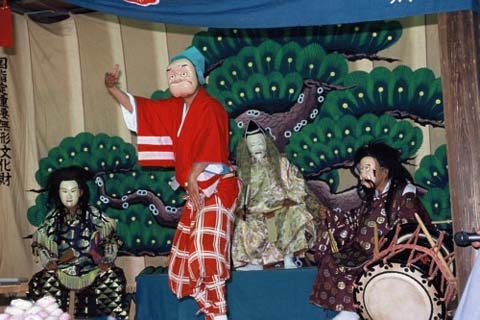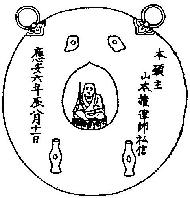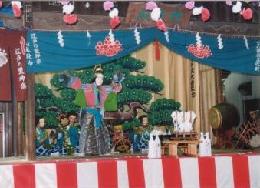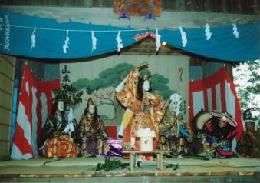About the Festival of Anazawa Tenjin Shrine
The Anazawa Tenjin Shrine festival in 2019 will be held on August 25th (Sunday).
Edo no Sato Kagura can be seen at the Kagura Hall inside Anazawa Tenjin shrine from around 1pm.

Edo no Sato Kagura
History of Kagura and Edo no Sato Kagura
Kagura is a performing art that originated in ancient times, Folk performing arts It is said to have the longest history among all the Divine spirit of Comfort It was a dance dedicated to the gods, performed to welcome them. Depends Return seat " means God Throne These words are thought to be the origin of the word Kagura.
Kagura, which originated in ancient times, spread throughout Edo city in the early Edo period and changed into various forms to suit the tastes of the Edo common people. One of these was Edo's Sato Kagura, which was actively performed at shrine festivals in Edo and the surrounding villages. Dedication The distinctive feature of this Edo Sato Kagura is that the performers wear masks. Pantheon The main features of the play were mythological themes. Kagura performer Another reason is that...
Currently, there are four Edo no Sato Kagura traditions in Tokyo. Mamiya Company (Shinagawa Ward), Wakayama Shachu (Taito Ward), Matsumoto In Morinaka (Arakawa Ward) and Inagi City Yamamoto All four shrines are designated as Important Intangible Folk Cultural Properties of Japan.
Inagi's Edo no Sato Kagura
Yorinobu Yamamoto The Edo Village Kagura of the company is the first Hironobu Yamamoto, the Priest In the early Muromachi period Oan It is said to have been founded in 1373, and the current head of the school, Yorinobu Yamamoto, is the 19th head of the school. Kuniyasu Shrine It is said that the Kagura dance started with Illustrated guide to famous places in Edo " ( Tenpo The book, published in 1997, includes the words "Kuniyasu Shrine" and " Temporary residence・Company employee The building depicted as a temporary palace is Prayer Hall It is thought that it may have had a religious function and was used as a place for various prayers and Kagura dances.
The Yamamoto family has a copy of the book, which is thought to be from the mid-Edo period. List of Shinto rituals In addition to the Kagura script, Meiwa The 6th year of the 1769 Iwai Shrine Suzumori Kagura Ceremony " Ancient documents (Kagura performances and items Appearance Numerous documents remain, including the "Sato Kagura" (list of the Sato Kagura folklore performances) which show that Sato Kagura has been passed down from the Edo period to the present day. It is also recorded that around the mid-Edo period, 50 Sato Kagura troupes were performing.
Edo no Sato Kagura Performance
Currently, the Yamamoto Yorinobu troupe performs over 40 Sato Kagura pieces, among which the most representative pieces are as follows:
[Classics] Heaven's Floating Bridge , Huangjin Ugly Woman , Sumie Great God , Yakumo Divine Poetry , Heaven's Rock Door , Kendama Living God , God's Raincoat and Hat , Heaven's Return , Ghostly Divide , The Descent of Heavenly Grandson , Kasasa Cherry Blossom Hunt , The joy of the mountains and the sea , Demon Slayer , Miwa Sacred Cedar , Saho subjugation , Conquest of Kumaso , Conquest of the Eastern Barbarians , Sakeori Renga , Brothers Searching , Billions of trillions of dollars , Respect for God and Patriotism , Mihozaki Fishing
[Modern] Autumn leaf viewing
[Fairy Tales] Inaba of Rabbit

Kuniyasu Shrine Deity Statue (Edo Meisho Zue)

Kuniyasu Shrine and Temporary Hall (Edo Meisho Zue)

Shiki-sanban of "Sumie Okami"

Gods of "Amanoiwa Door"












